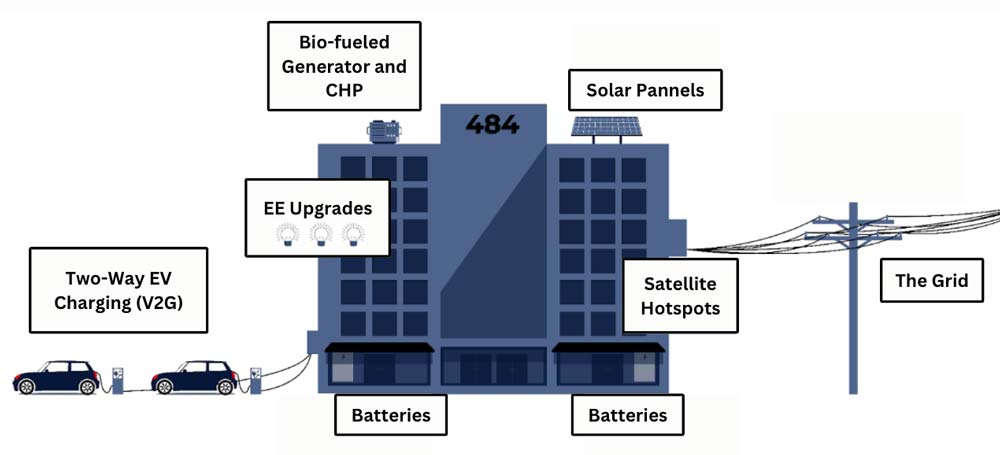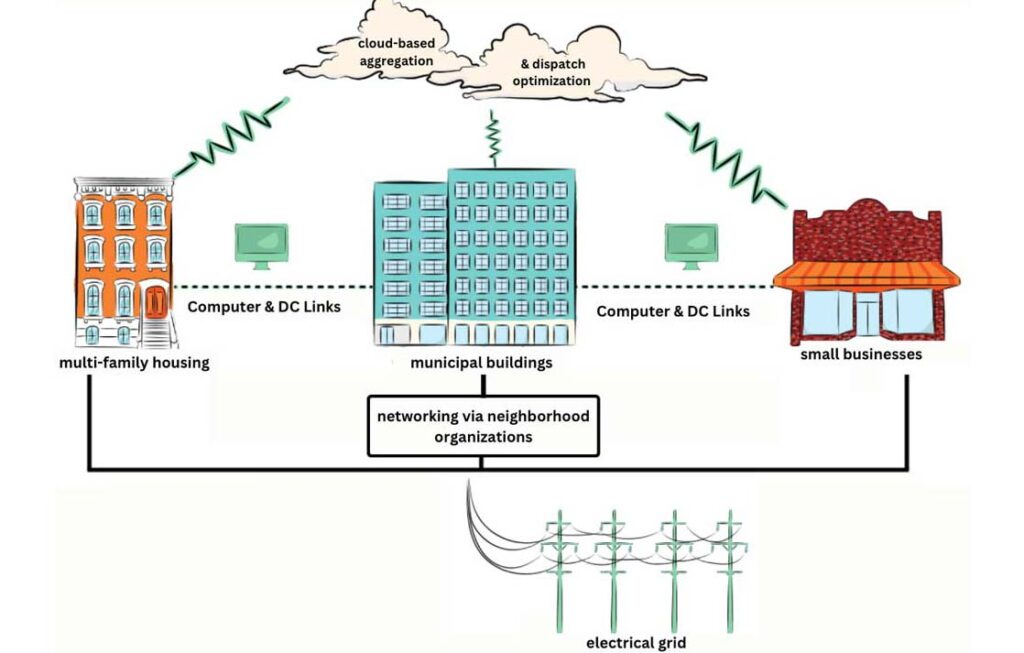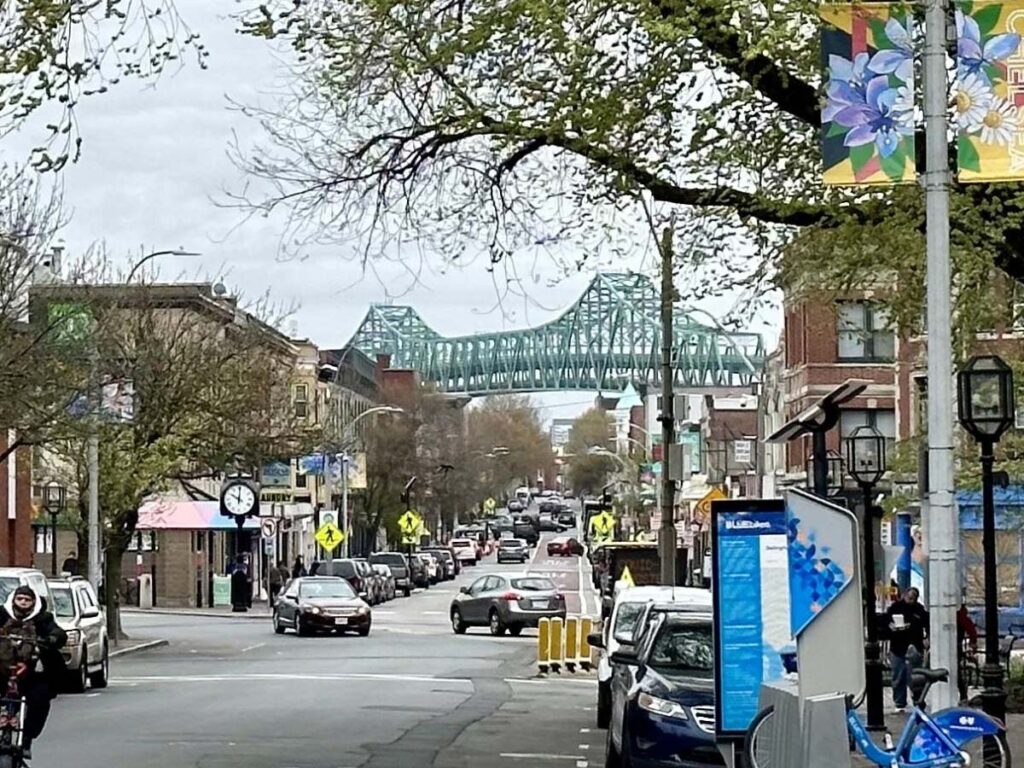How Does It Work?
Local energy generation and storage provide resiliency to each site. Connections among these sites make it a microgrid. The method for energy generation, and the means of connection, can change depending on each circumstance. Solar microgrids, for example, are a case where energy is generated by solar panels which may be connected to the larger grid, as well as the on-site battery storage.
The key benefit that differentiates microgrids is their ability to ”island” from the grid in the event of an emergency. This means that when the larger grid shuts down, folks can prosper in place- drawing energy from the microgrid’s on-site storage instead. Critical services like wifi and cellular service carry throughout an outage. In our designs, we also incorporate as many energy efficiency and design upgrades as possible to maximize the benefits of the microgrid. This could include two-way EV charging, a bio-fueled generator, satellite hotspots, healthy home upgrades, and other features depending on the nature of the specific project.
For communities and municipalities within dense urban areas, however, finding space for a battery large enough to carry the building’s loads, and finding roof space to house the solar panels, is a major challenge. That’s why CESI has invented a new structure for microgrids called Microgrids Without Borders™ which is flexible to the sizing, financial, and spacing constraints of each project. Learn more about our ongoing Microgrid Without Borders™ projects.
In this design, buildings participating in the microgrid do not have to be contiguous or connected by physical wires. Rather, we can aggregate the loads of each facility virtually through cloud-based controllers which communicate wirelessly to maximize the scale and financial benefits of the microgrid.




